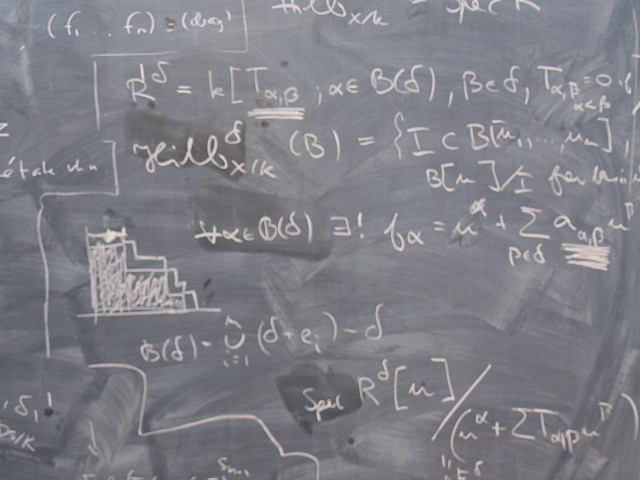Data structures and algorithms for visualisation of spatio-temporal data sets. Topological data analysis. Feature based methods. Colour. Perception. Fundamental elements of visualization. Software tools for visualization.
DD2257 Visualization 7.5 credits

The focus of this course is on discussing efficient techniques to visually represent large-scale data sets from simulation and measurement. We will discuss the visualization pipeline, data structures, mapping techniques and special rendering techniques for data from different application domains such as fluid dynamics, climate research, medicine or biology. Various examples will be given to outline the benefits of visualization techniques in practical applications.
Information per course offering
Information for Autumn 2024 visual24 programme students
- Course location
KTH Campus
- Duration
- 26 Aug 2024 - 27 Oct 2024
- Periods
- P1 (7.5 hp)
- Pace of study
50%
- Application code
50330
- Form of study
Normal Daytime
- Language of instruction
English
- Course memo
- Course memo is not published
- Number of places
Places are not limited
- Target group
Open for all programmes from year 3 and for students in master's programmes as long as it can be included in your programme.
- Planned modular schedule
- [object Object]
- Schedule
- Part of programme
Master's Programme, Applied and Computational Mathematics, åk 1, Optional
Master's Programme, Applied and Computational Mathematics, åk 2, Optional
Master's Programme, Computer Science, åk 2, CSDA, Recommended
Master's Programme, Computer Science, åk 2, CSSC, Conditionally Elective
Master's Programme, Computer Science, åk 2, CSVG, Conditionally Elective
Master's Programme, Computer Simulations for Science and Engineering, åk 1, Conditionally Elective
Master's Programme, ICT Innovation, åk 1, DASC, Recommended
Master's Programme, ICT Innovation, åk 1, DASE, Recommended
Master's Programme, ICT Innovation, åk 1, VCCN, Recommended
Master's Programme, ICT Innovation, åk 2, DASC, Recommended
Master's Programme, ICT Innovation, åk 2, DASE, Recommended
Master's Programme, Industrial Engineering and Management, åk 1, IAVN, Conditionally Elective
Master's Programme, Industrial Engineering and Management, åk 1, MAIG, Conditionally Elective
Master's Programme, Interactive Media Technology, åk 1, Conditionally Elective
Master's Programme, Interactive Media Technology, åk 2, Conditionally Elective
Master's Programme, Machine Learning, åk 1, Conditionally Elective
Master's Programme, Machine Learning, åk 2, Conditionally Elective
Contact
Tino Weinkauf, weinkauf@kth.se
Course syllabus as PDF
Please note: all information from the Course syllabus is available on this page in an accessible format.
Course syllabus DD2257 (Autumn 2024–)Content and learning outcomes
Course contents
Intended learning outcomes
After completing the course with a passing grade the student should be able to:
• name concepts and algorithms in visualization and relate them to one another
• describe the basics of visualization algorithms and concepts
• identify and characterise results of selected visualization algorithms
• apply visualization algorithms to small data sets.
Literature and preparations
Specific prerequisites
- Knowledge in Calculus in One Variable, 7,5 credits, equivalent to completed course SF1625/SF1673.
- Knowledge in linear algebra, 7,5 credits, equivalent to completed course SF1624/SF1672/SF1684.
- Knowledge and skills in programming, 6 credits, equivalent to completed course DD1337/DD1310-DD1319/DD1321/DD1331/ DD100N/ID1018.
Recommended prerequisites
The course DH2320 "Introduction to Visualization and Computer Graphics" is recommended.
Equipment
Literature
Examination and completion
If the course is discontinued, students may request to be examined during the following two academic years.
Grading scale
Examination
- LAB1 - Laboratory Assignments, 3.5 credits, grading scale: P, F
- TEN1 - Examination, 4.0 credits, grading scale: A, B, C, D, E, FX, F
Based on recommendation from KTH’s coordinator for disabilities, the examiner will decide how to adapt an examination for students with documented disability.
The examiner may apply another examination format when re-examining individual students.
TEN1 is conducted as a written exam.
Opportunity to complete the requirements via supplementary examination
Opportunity to raise an approved grade via renewed examination
Examiner
Ethical approach
- All members of a group are responsible for the group's work.
- In any assessment, every student shall honestly disclose any help received and sources used.
- In an oral assessment, every student shall be able to present and answer questions about the entire assignment and solution.
Further information
Course room in Canvas
Offered by
Main field of study
Education cycle
Add-on studies
Please discuss with the instructor.
Contact
Supplementary information
In this course, the EECS code of honor applies, see:
http://www.kth.se/en/eecs/utbildning/hederskodex